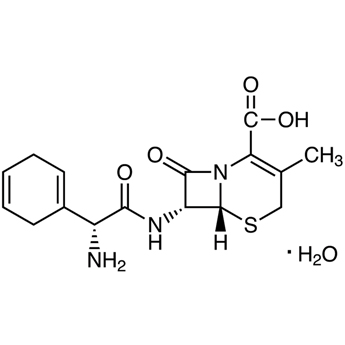
Cephradine is a cephalosporin antibiotic that is used to treat various bacterial infections. It is available in capsule form, and is also known by its brand name, Velosef. Cefradine capsules are prescribed by doctors to treat a wide range of bacterial infections, including respiratory tract infections, skin and soft tissue infections, urinary tract infections, and more.
The active ingredient in cefradine capsules is cefradine, which belongs to the cephalosporin class of antibiotics. Cephalosporins work by interfering with the bacteria’s ability to form a cell wall, ultimately leading to the bacteria’s death.
Cefradine capsules are typically taken orally, with or without food, and the dosage and duration of treatment will vary depending on the severity of the infection and the patient’s medical history. It is important to follow the instructions provided by your doctor or pharmacist and to complete the full course of treatment, even if symptoms improve before the end of the treatment period.
It is also important to let your doctor or pharmacist know if you are taking any other medications or have any underlying medical conditions before starting treatment with cefradine capsules. Some medications, such as antacids, can interfere with the absorption of cefradine and reduce its effectiveness.
In addition to its use in treating bacterial infections, cefradine capsules are also used for prophylaxis (prevention) of infection in certain surgical procedures, such as dental extractions or tonsillectomies. In these cases, cefradine capsules are typically taken before the procedure to prevent infection.
Cefradine capsules are available by prescription only and should only be taken under the supervision of a healthcare professional. If you have any questions or concerns about cefradine capsules or their use, you should speak to your doctor or pharmacist.
Mechanism of Action
Cefradine is a beta-lactam antibiotic that works by inhibiting bacterial cell wall synthesis. It does this by binding to specific enzymes called penicillin-binding proteins (PBPs) that are involved in the cross-linking of peptidoglycan in the bacterial cell wall. This leads to the inhibition of bacterial cell wall synthesis and ultimately the death of the bacteria.
Cefradine is effective against a wide range of gram-positive and gram-negative bacteria, including Staphylococcus aureus, Streptococcus pyogenes, Escherichia coli, and Klebsiella pneumoniae.
Clinical Efficacy
Cefradine has been shown to be effective in treating a variety of bacterial infections in clinical trials. In a study of patients with community-acquired pneumonia, cefradine was found to be as effective as amoxicillin in achieving clinical cure rates.
Cefradine has also been shown to be effective in treating urinary tract infections. In a study of patients with uncomplicated urinary tract infections, cefradine was found to be as effective as trimethoprim-sulfamethoxazole in achieving clinical cure rates.
Cefradine has been used successfully in the treatment of skin and soft tissue infections. In a study of patients with cellulitis, cefradine was found to be as effective as erythromycin in achieving clinical cure rates.
Adverse Effects
As with all antibiotics, cefradine can cause side effects in some patients. The most common side effects reported in clinical trials include gastrointestinal disturbances, such as nausea, vomiting, and diarrhea. Other less common side effects include allergic reactions, such as rash and hives, and hypersensitivity reactions, such as anaphylaxis.
Cefradine may also cause a variety of other adverse effects, including headache, dizziness, and skin rashes. In rare cases, cefradine may cause serious adverse effects, such as pseudomembranous colitis, a severe and potentially life-threatening inflammation of the colon.
Drug Interactions
Cefradine may interact with other medications and drugs, including other antibiotics, anticoagulants, and probenecid. Patients should inform their healthcare provider of all medications they are currently taking before starting treatment with cefradine.
Contraindications
Cefradine is contraindicated in patients who have a history of hypersensitivity reactions to cephalosporin antibiotics or any of the ingredients in the medication. It should also be used with caution in patients with a history of liver disease or renal impairment.
Pregnancy and Lactation
Cefradine is classified as a category B medication by the U.S. Food and Drug Administration (FDA), which means that it has not been shown to cause harm to a developing fetus in animal studies. However, there have been no well-controlled studies of cefradine in pregnant women, and it should only be used during pregnancy if the potential benefits outweigh the potential risks to the fetus.
Cefradine is excreted in human milk and may cause adverse effects in nursing infants
In conclusion, cefradine capsules are a commonly prescribed antibiotic used to treat bacterial infections. They work by interfering with the bacteria’s ability to form a cell wall, ultimately leading to the bacteria’s death. Cefradine capsules are generally safe and effective for most people, but there are some situations in which they may not be suitable. If you have any questions or concerns about cefradine capsules or their use, you should speak to your doctor or pharmacist.


